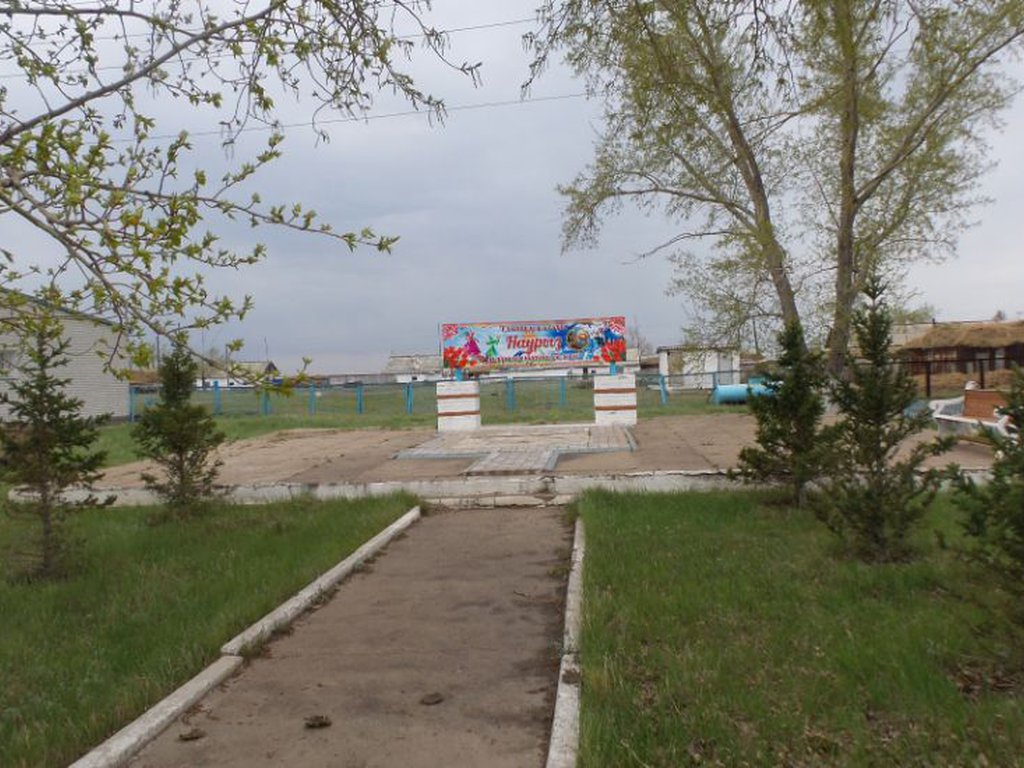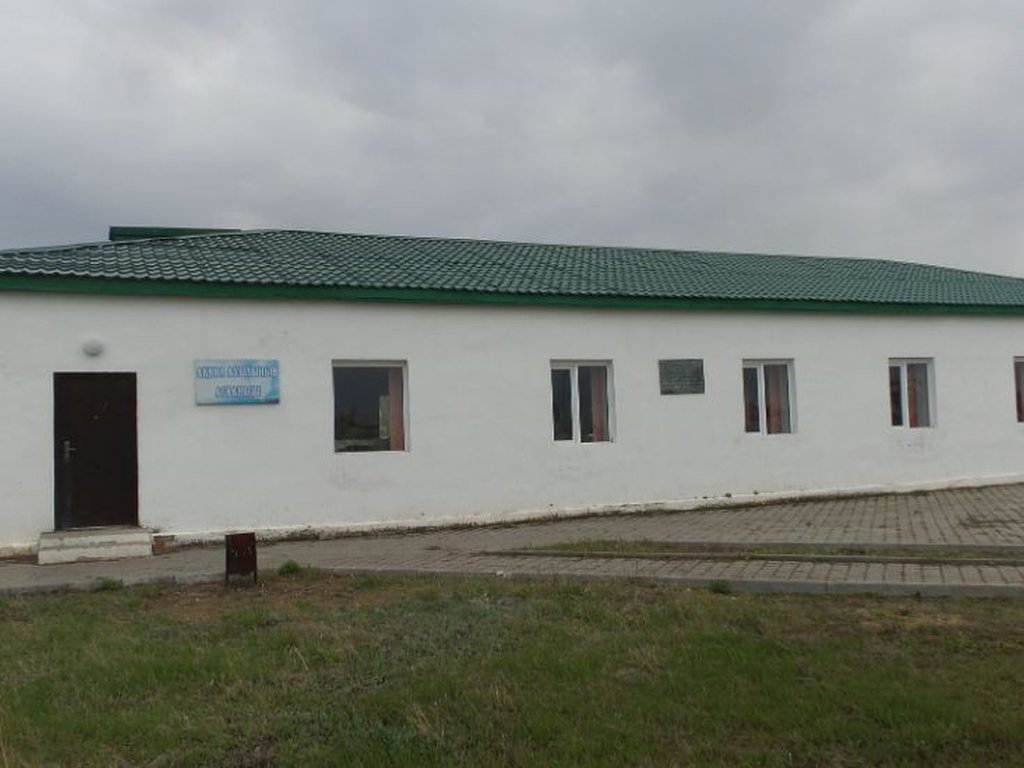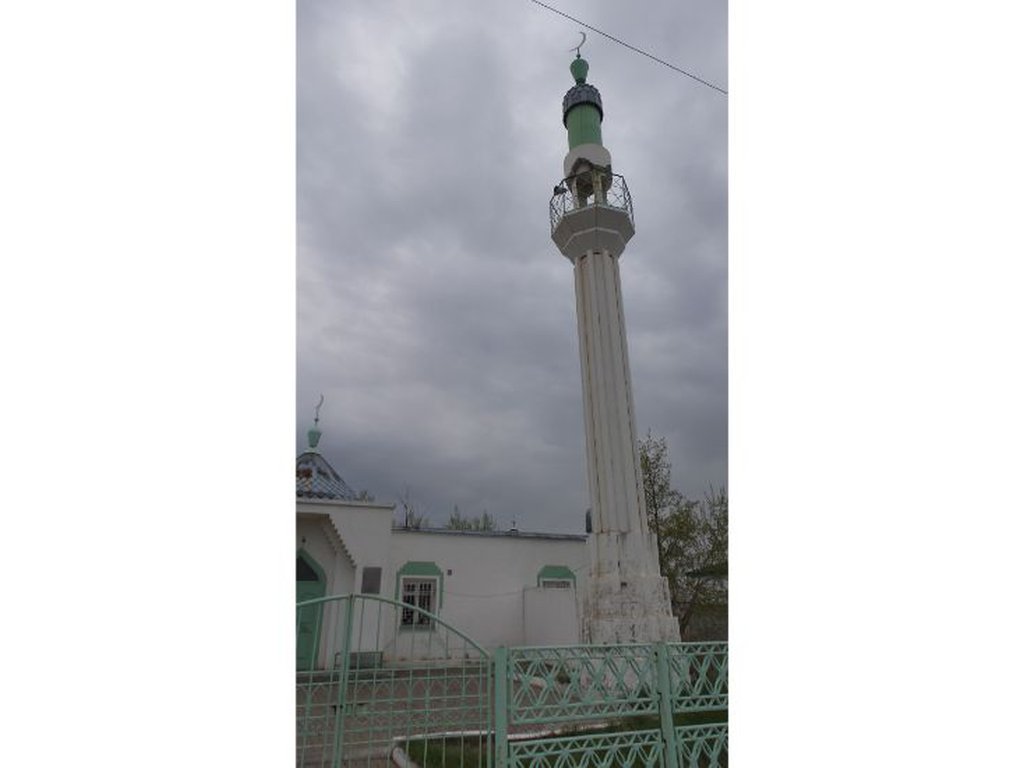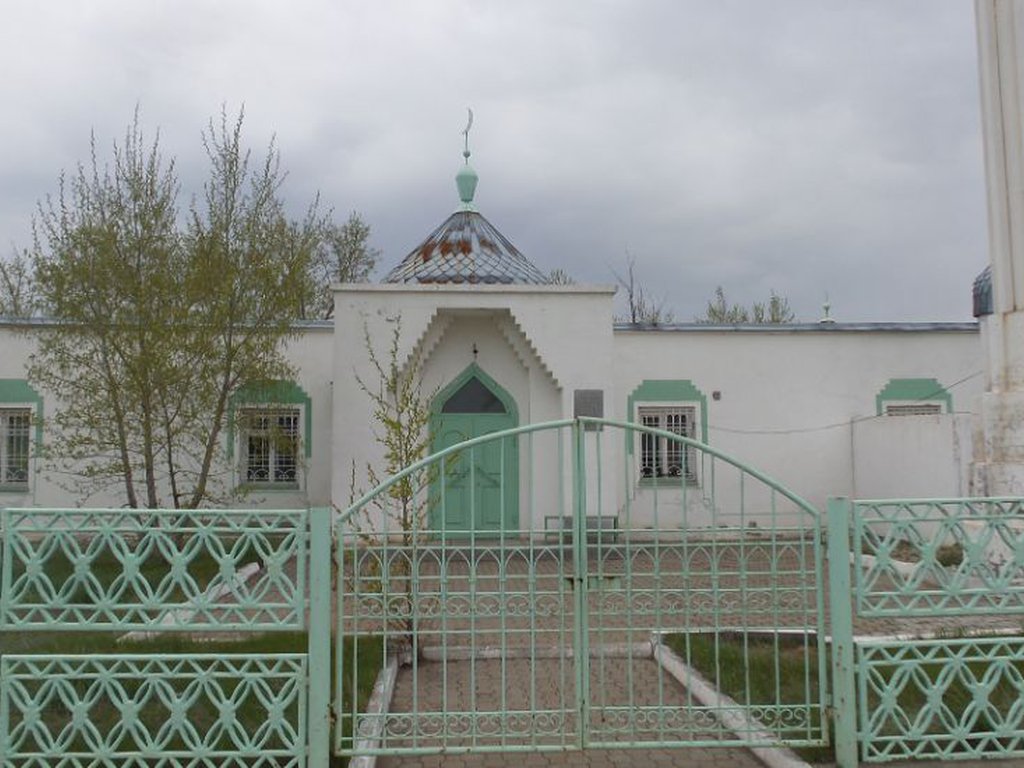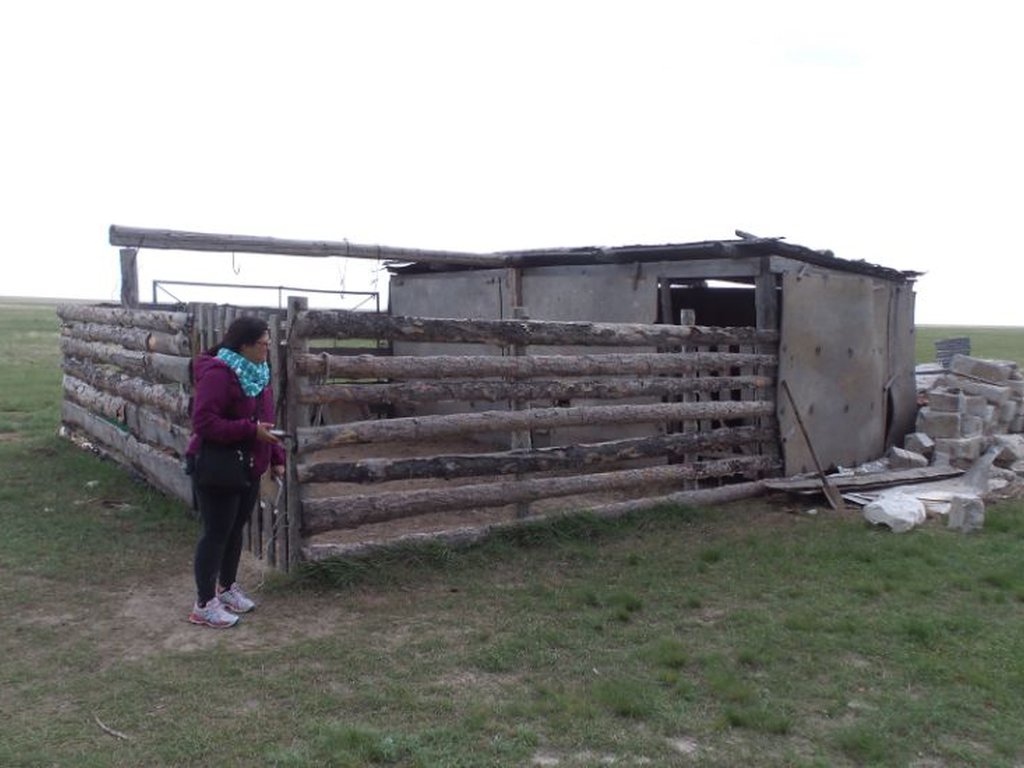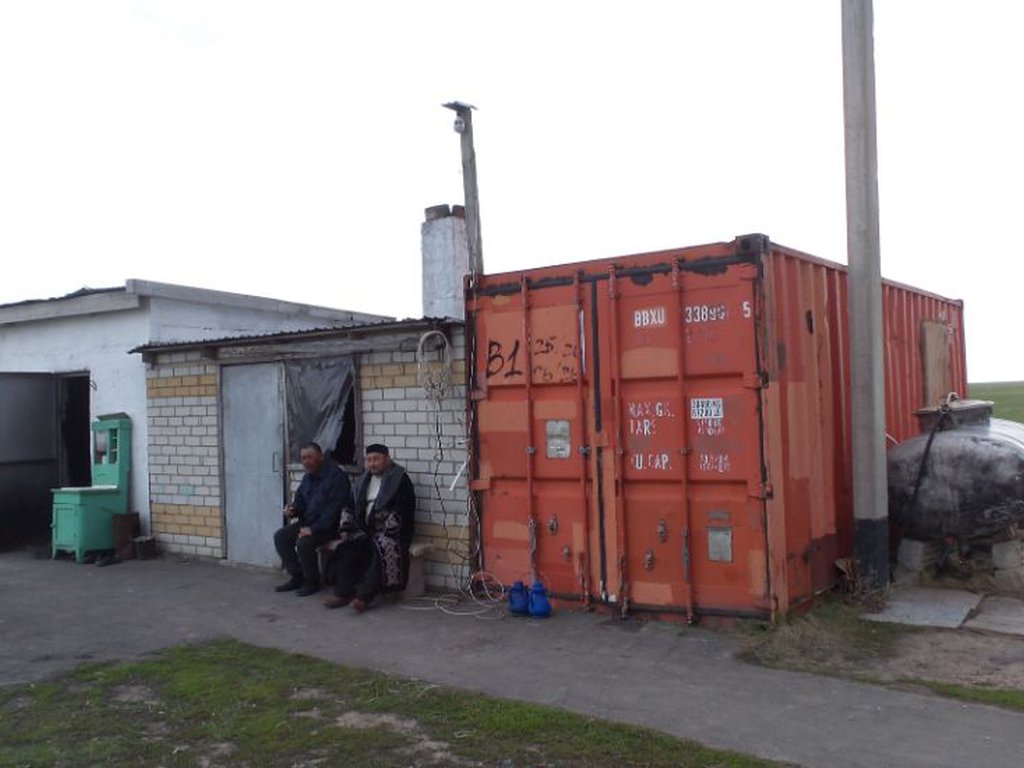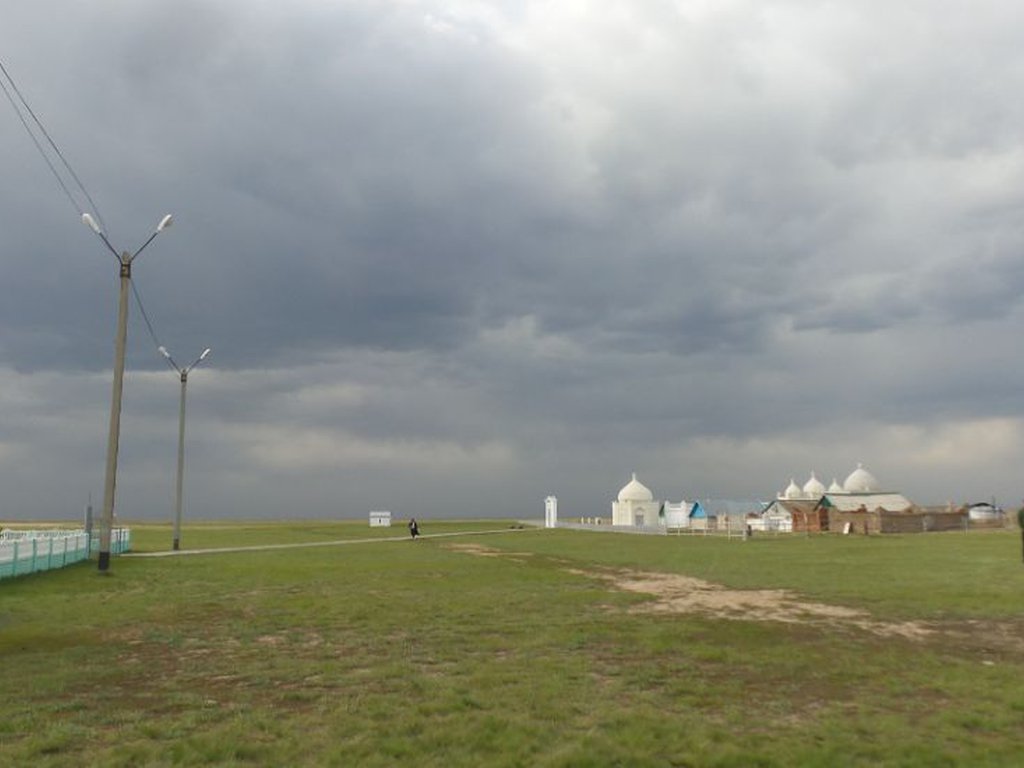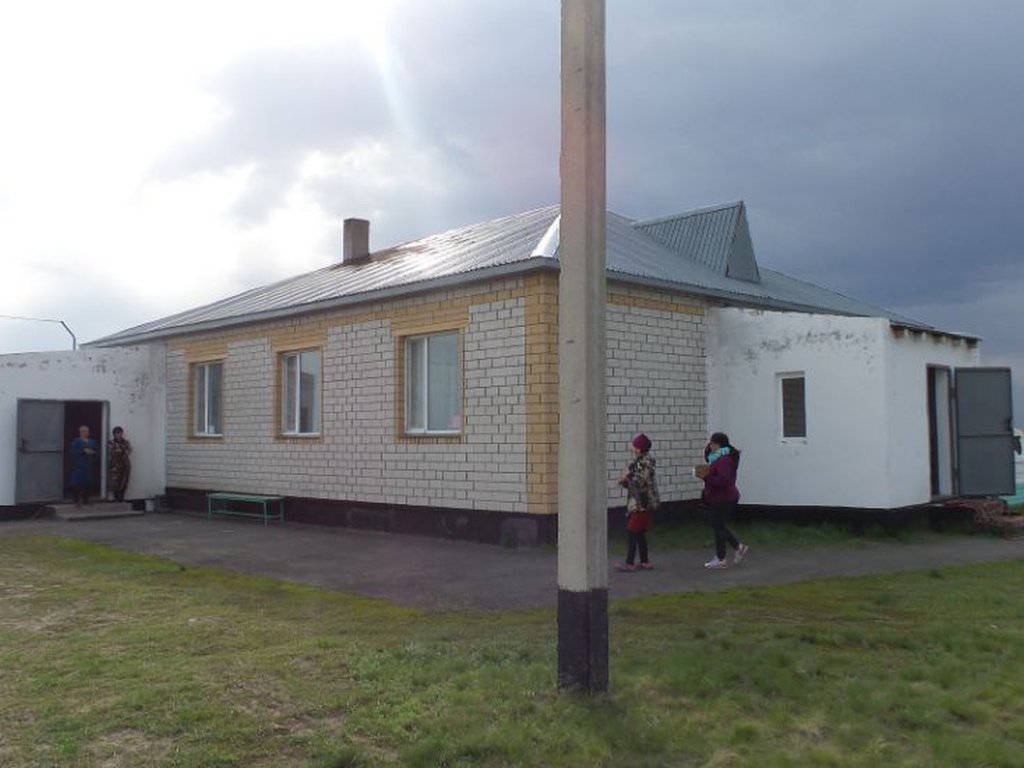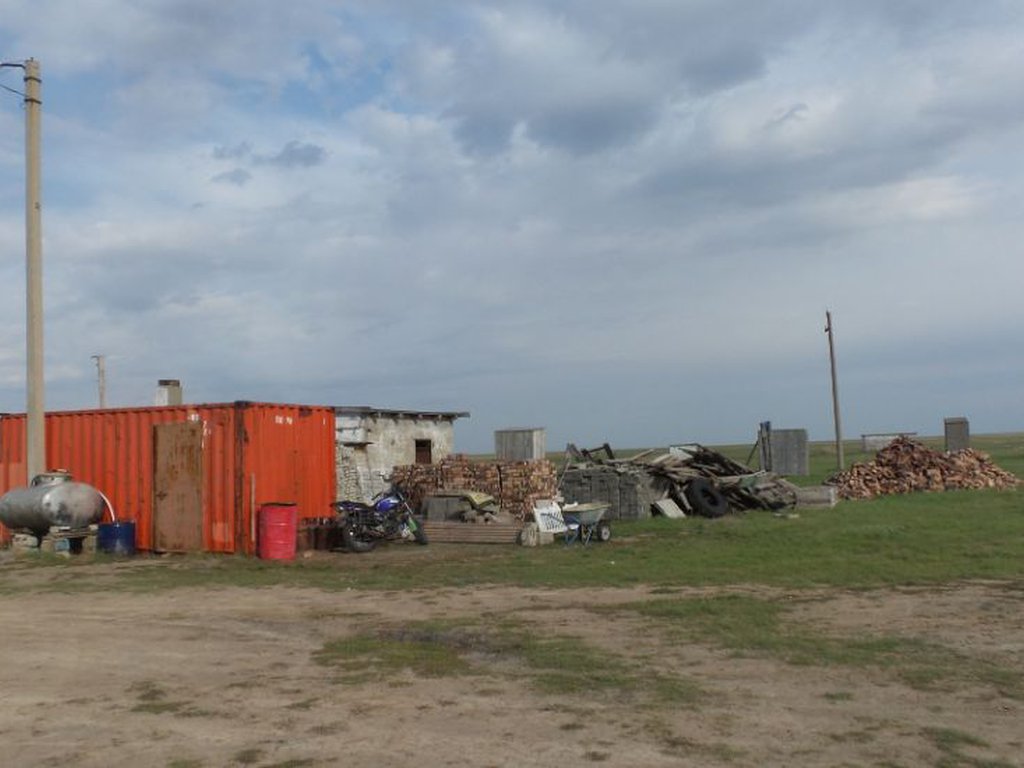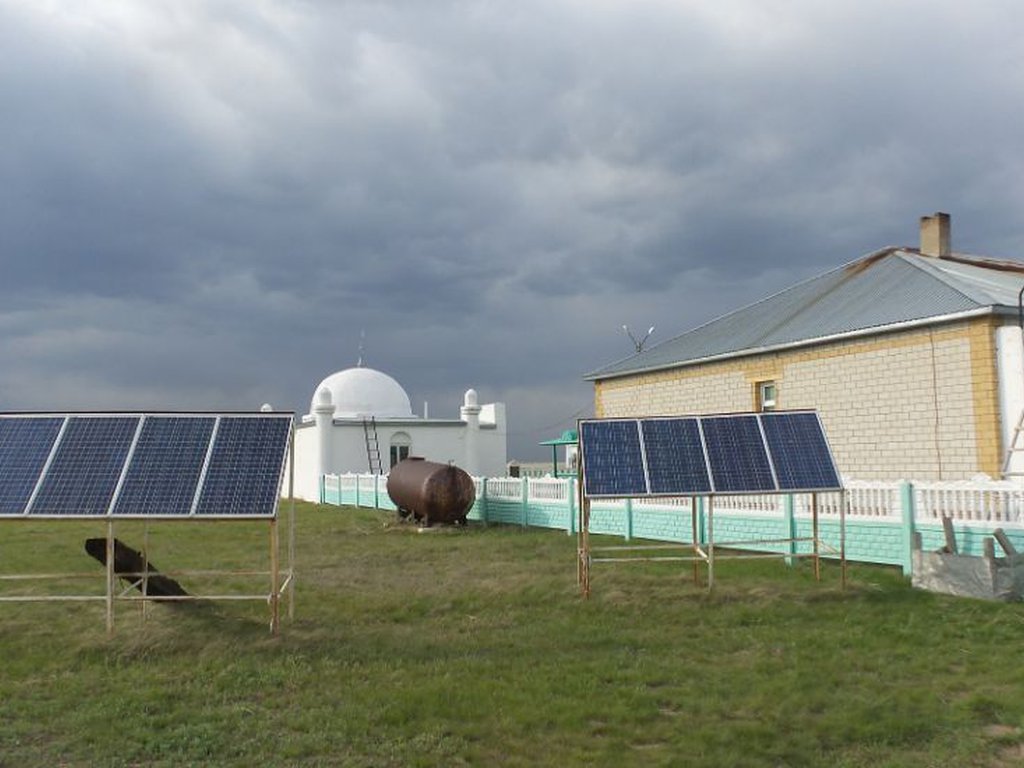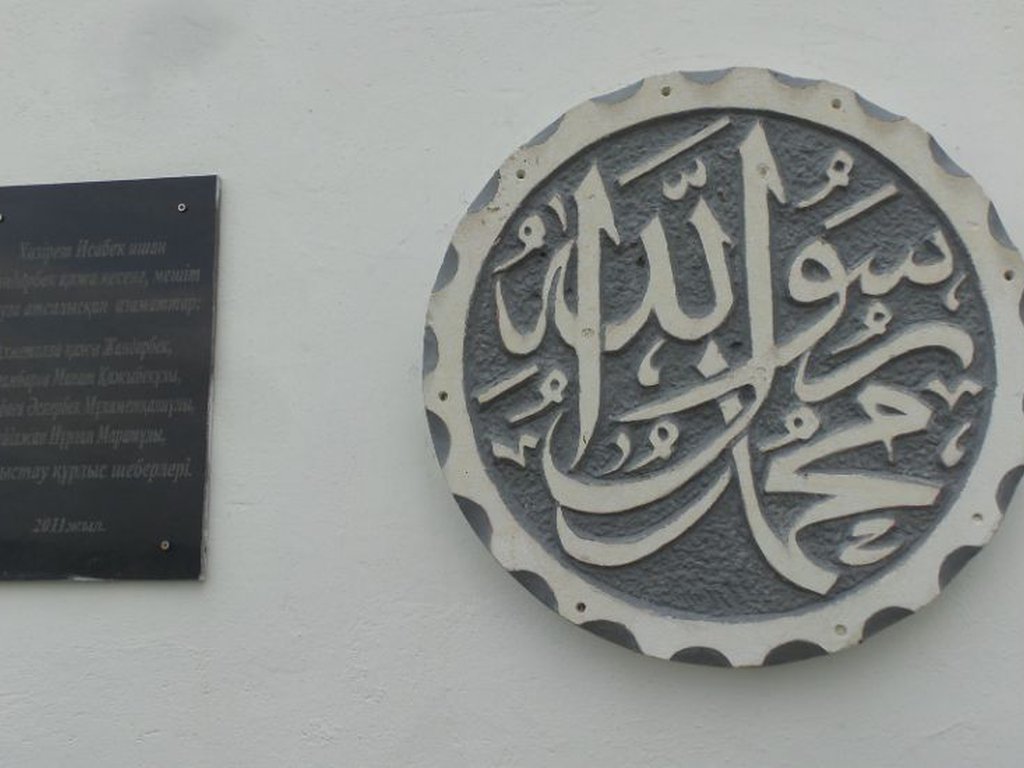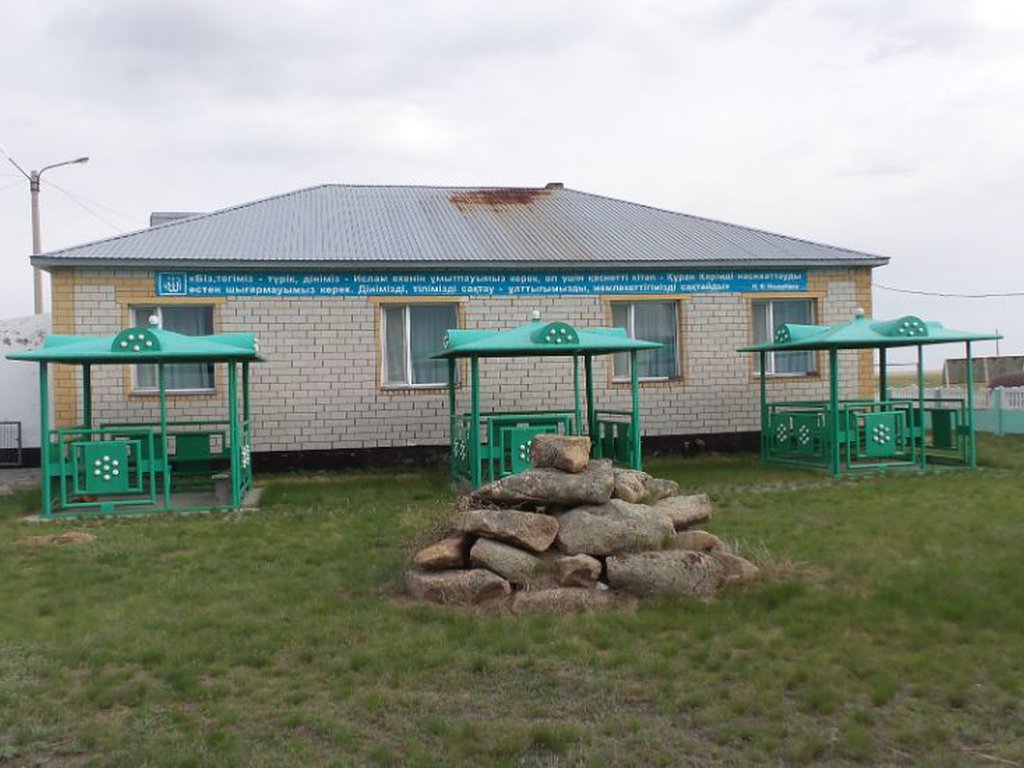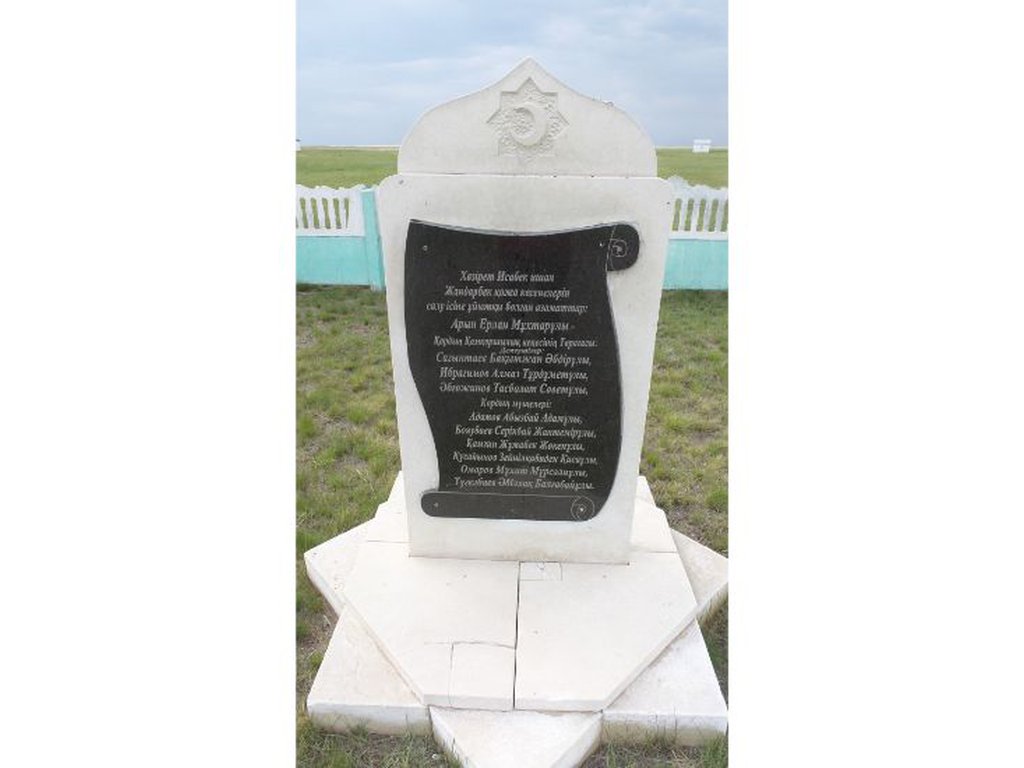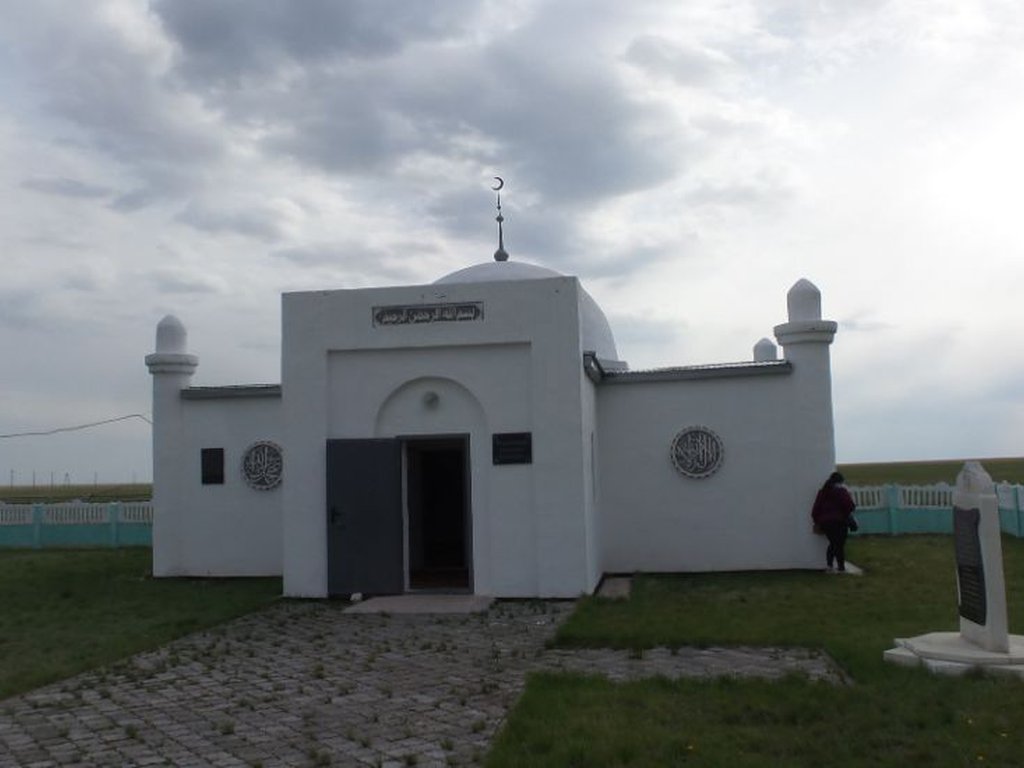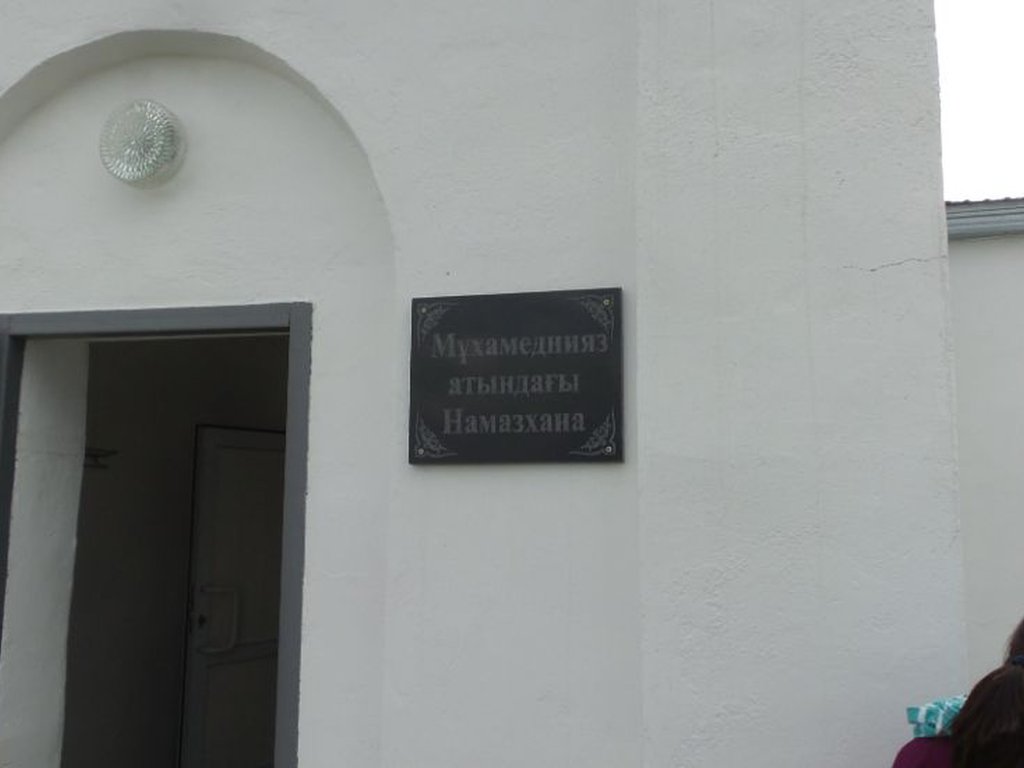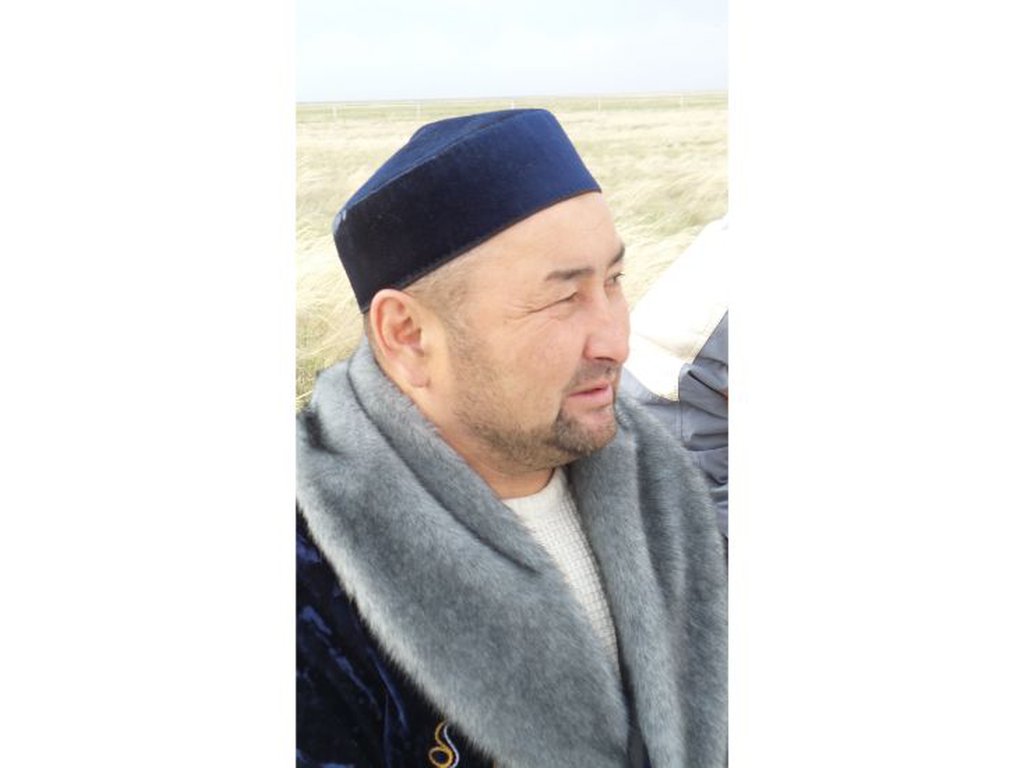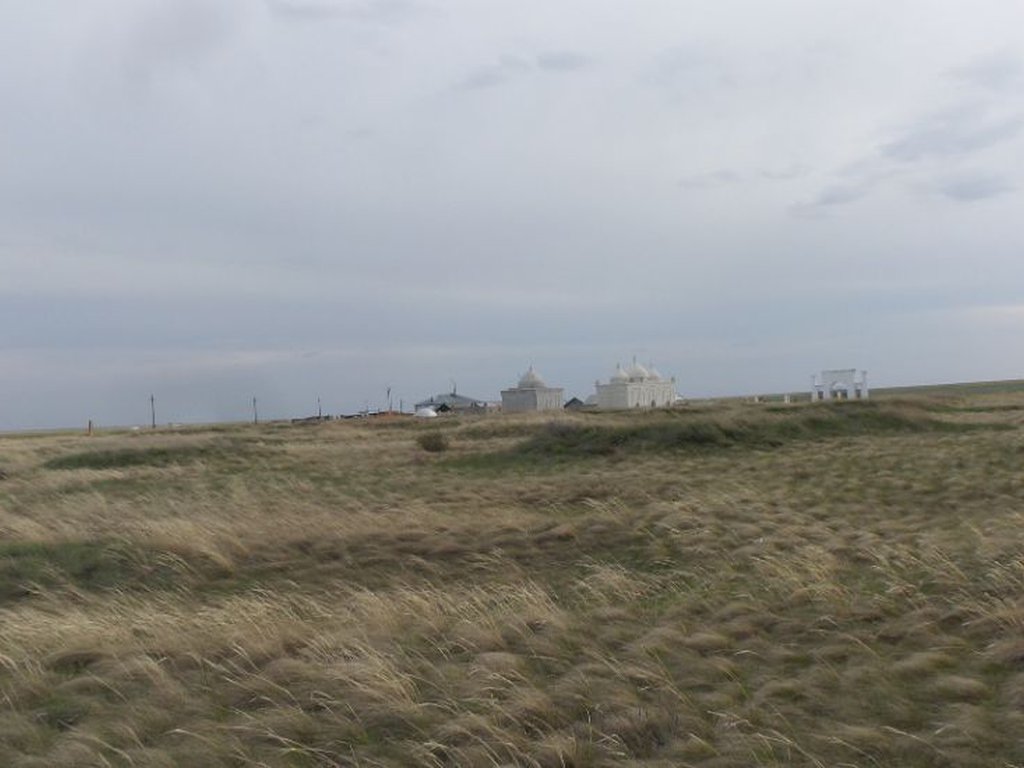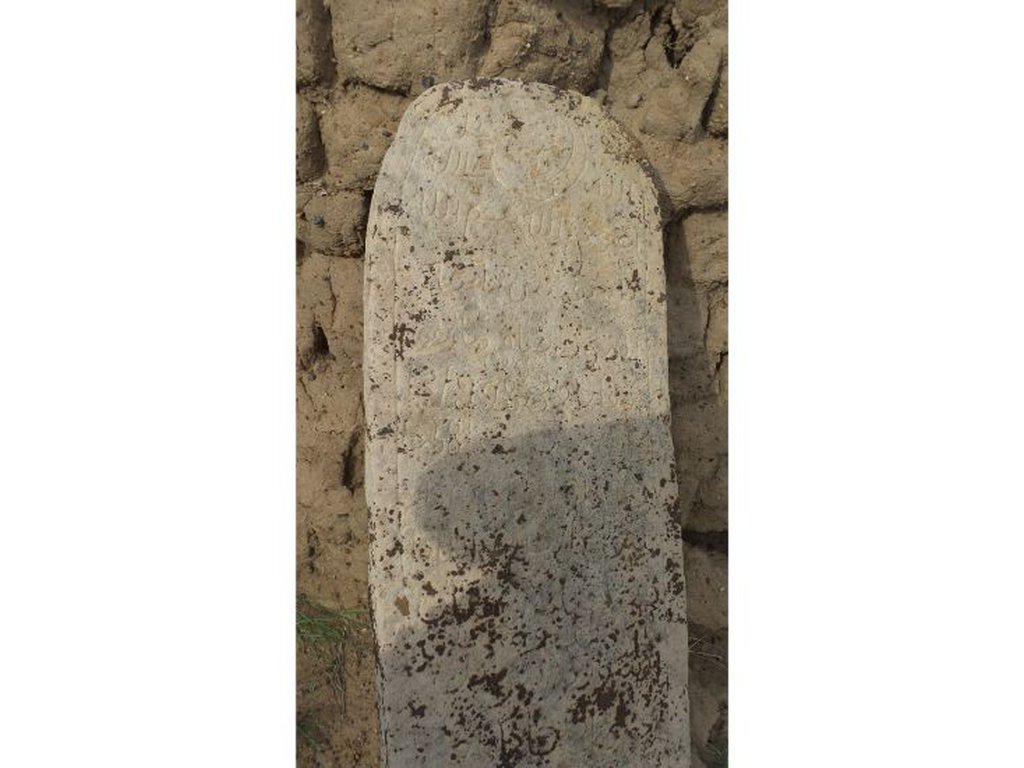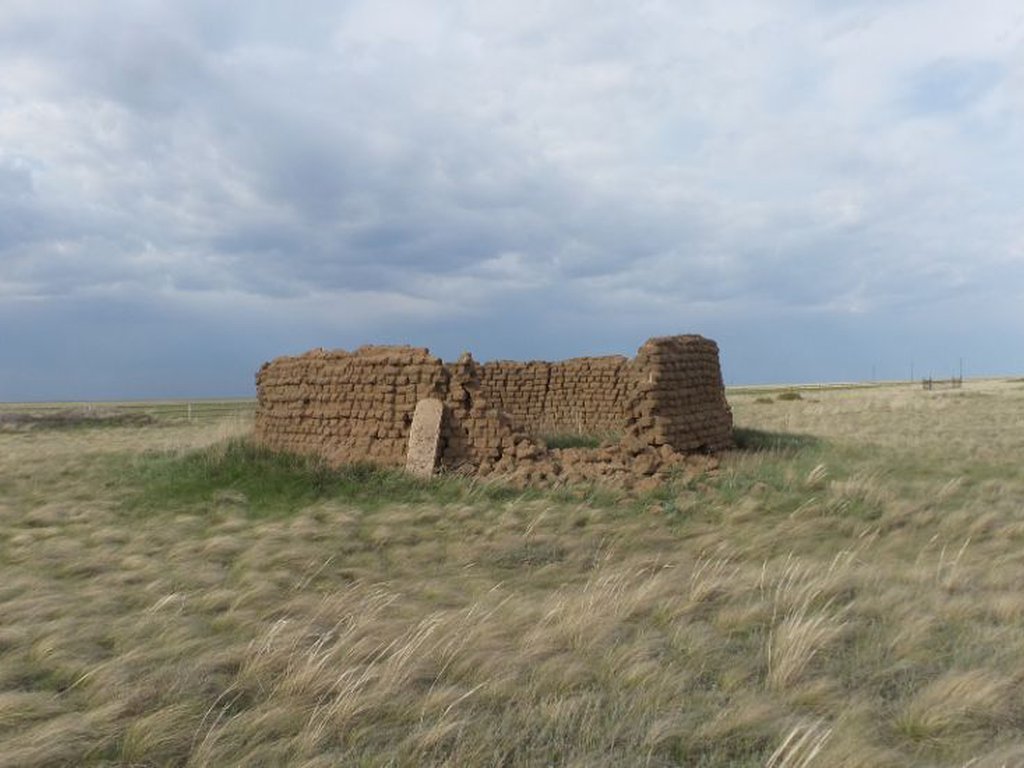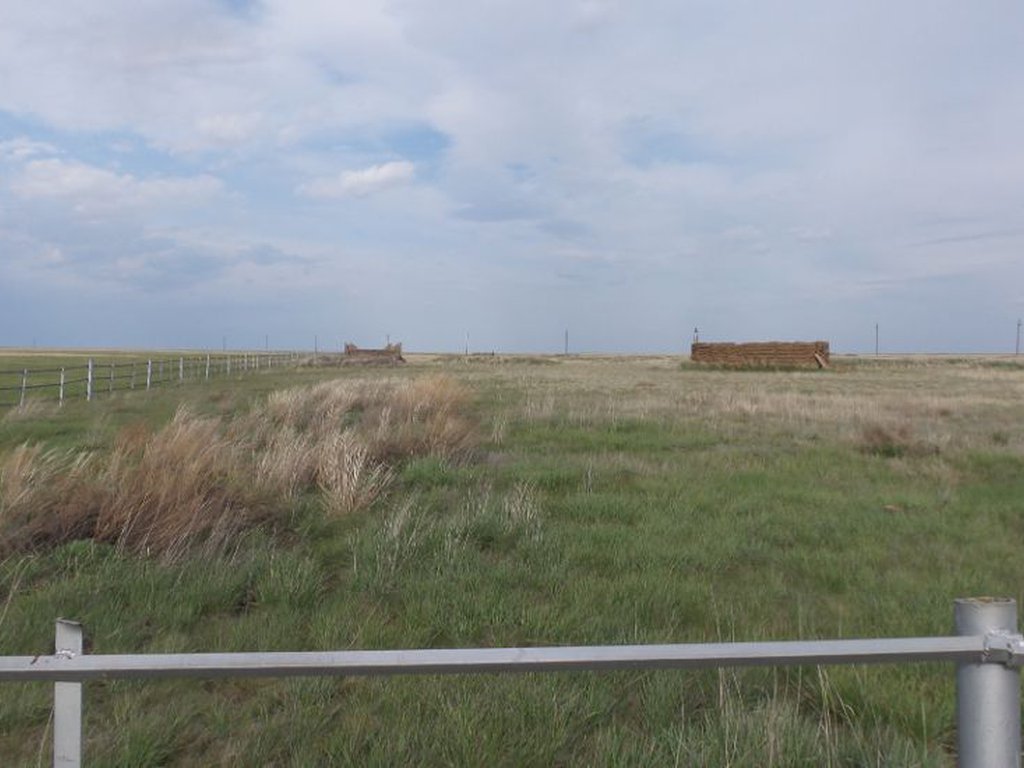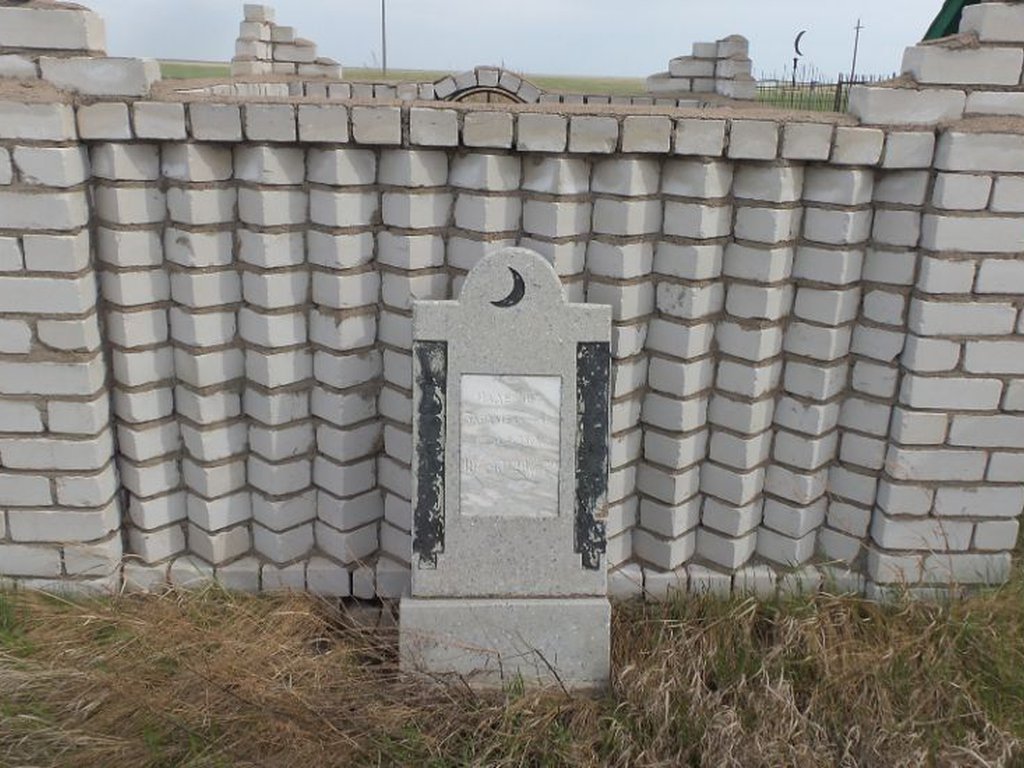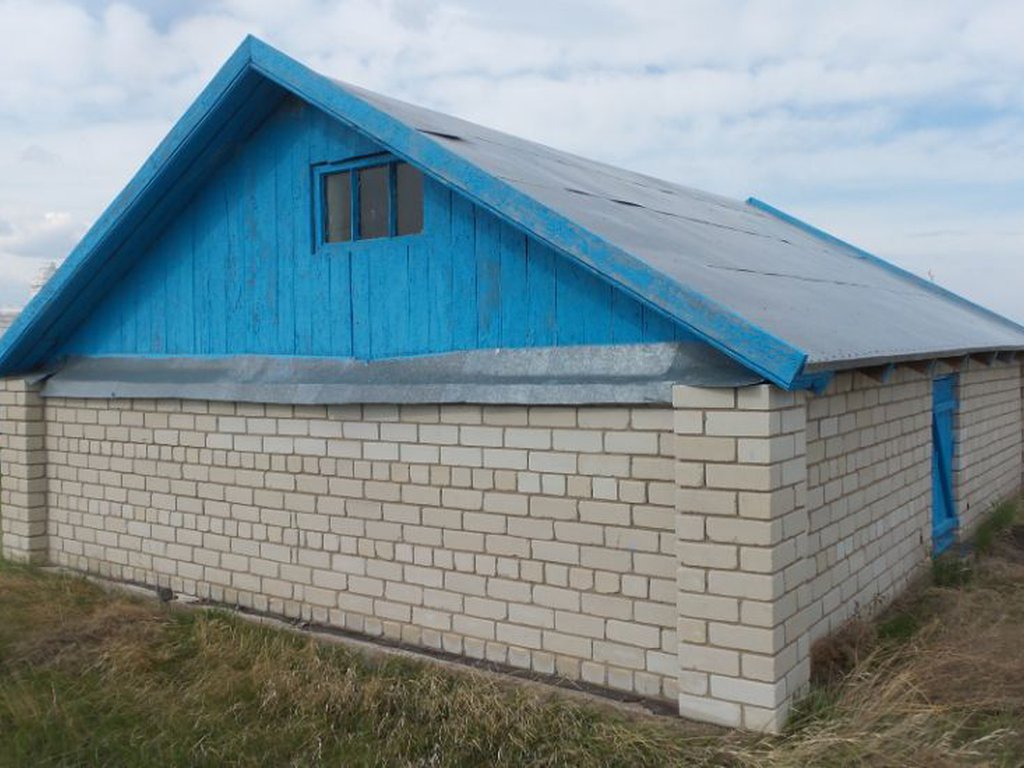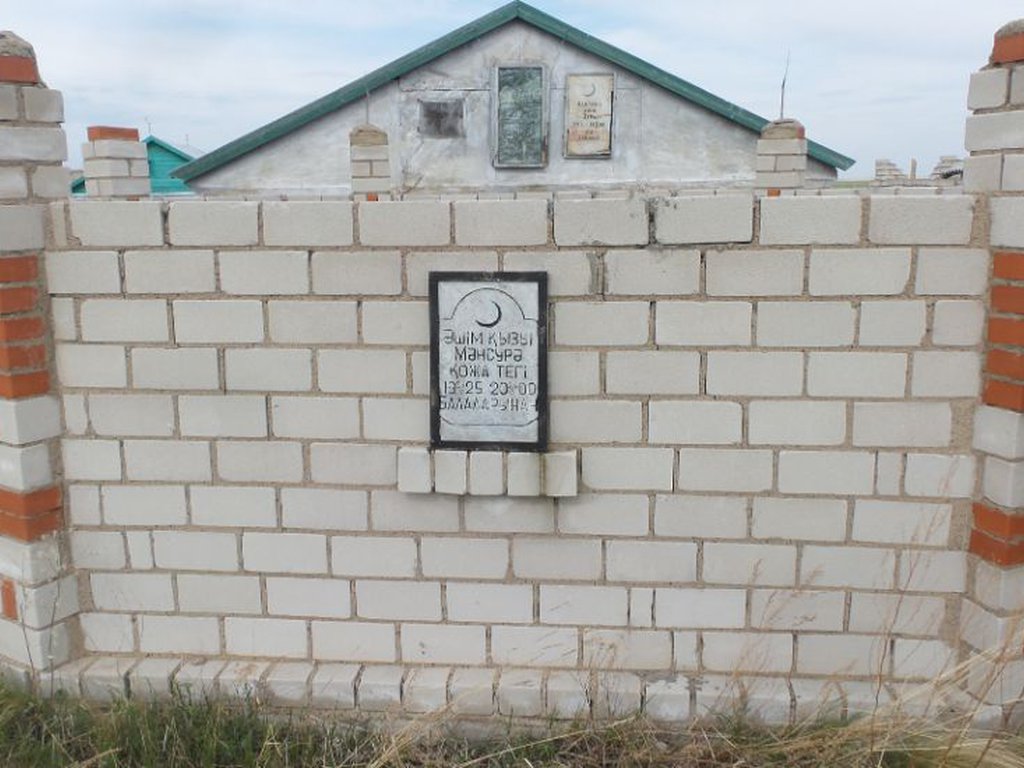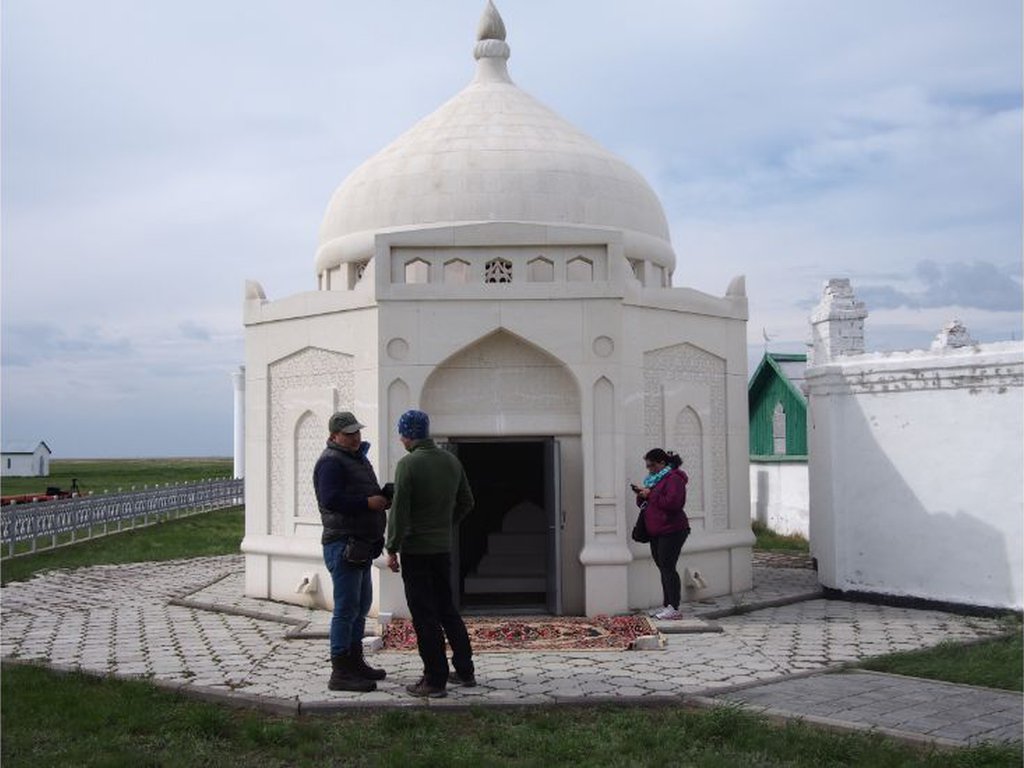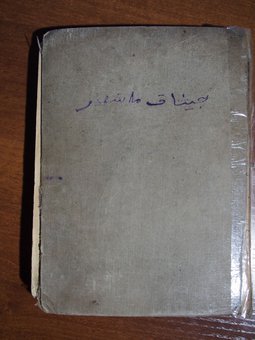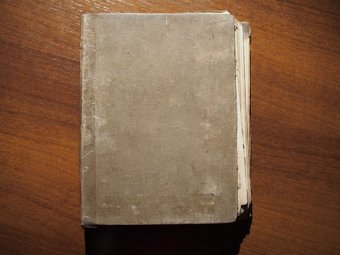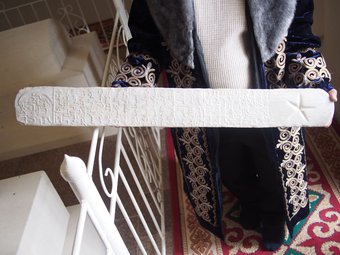Isabek-ishan mausoleum in Akkol Zhailma. Паспорт объекта

Full description
Name: Mausoleum (mazar complex) of Isabek-Ishan in Akkol Zhailma (Kaz. Исабек-ишанын мазары)
Site type: Burial and ancestral complex of the sacral family kozha (khoja) where Isabek-ishan, his descendants and relatives of the sacred family (kozha) are buried.
Founder: Isabek-Ishan (around 1792-1871).
Foundation time: not known exactly. Since about 1871
Founding circumstances: Isabek-Ishana complex is located in the Akkol Zhailma area near the Aulie-kol lake, 80 kilometers from the city of Ekibastuz. The Akkol Lake region is characterized by a number of different archaeological findings (mazars of the Golden Horde era), holy places, etc. (1). However, one of the main operating facilities is Isabek-Ishan complex. This sacred site is a small cemetery, where the main objects are: a three-domed mazar where Isabek-Ishan is buried, a one-dome mazar of his descendant Zhandarbek (1907-1996) and a number of other representatives of the sacred family of Isabek who died at the end of the 19th and during the 20th centuries (2 ). According to the ethnographic data, Isabek-Ishan was buried here first from his family in about 1871, but before that this place was an ancestral cemetery of one of the local clans of the Argyn tribe. This clan voluntarily ceded this cemetery for the sacred clan kozha because of the high spiritual status of Isabek-ishan
The original Isabek-ishana mazar was made of clay (samana). Only a small edge of the fence of this old building has remained. The architecture of the original mazar is unknown. Isabek-Ishan Mazar is the burial of three people: Isabek himself, then the graves of his son Nurmukhammed and his younger brother Muhammad Niyaz (3) were added, therefore the mazar today represents a three-domed building. During the Soviet period, around in the 1950s, the mazar underwent a complete reconstruction, or rather, a new mazar was built over the grave of Isabek-Ishan and his descendants (4). The Mazar of the Soviet period was already made of modern materials and was a typical rural rectangular house. This building was erected on top of the crumbling adobe walls. Near the burial of Isabek, the number of other small mausoleums or mazars gradually increased. In 1996, a descendant of Isabek-Ishan, Zhandarbek, who was known as the awliya, or saint of the region, died, and a small one-dome mazar made of modern materials was also erected over his burial.
In 2011, a new complete reconstruction of this complex was carried out. The sponsors were representatives of the business elite of Pavlodar region and mainly representatives of another sacred kozha family Abguzhinovs from Ekibastuz (5). Moreover, with the support of the former akim of Pavlodar region, Yerlan Aryn, a fund named after Isabek-ishan was created. This fund has accumulated enough funds for the demolition of Soviet-era mazars and the construction of new ones. Income of the fund came in the form of construction materials and labor, both from individuals and from various companies. The construction was carried out by volunteers represented by the residents of Pavlodar region.
The current three-domed Isabek-Ishan mazar and the one-domed mazar of Zhandarbek are made of a material which is not typical for the steppe belt - white shell rock. This material was specially ordered from the Mangystau peninsula, and in general, the cost of building mazars, a new ziaratkhana for pilgrims and a holy well amounted for up to USD 200,000 at the exchange rate of 2011. Also, to work on the shell rock, a team of craftsmen from Uzbekistan (Karakalpakstan) were involved, who used the architectural traditions of Mangystau. Isabek-Ishan complex received a different form compared with other complexes. Thus, in the XX and XXI centuries, Isabek-Ishan complex changed its architectural appearance at least twice.
During the Soviet period, when open forms of religiosity were prohibited and ziaratkhana did not exist, pilgrims spent the night in cars during their visit to the mazar. During the reconstruction in 2011, builders and sponsors paid special attention to the construction of a spacious ziaratkhana building with a heating system and a kitchen. Ziaratkhana is a room consisting of two large rooms where pilgrims eat, stay for the night, etc. Apart from the ziaratkhana there are outbuildings, a barn and a corral for sacrificial cattle.
This mazar complex is located near the lake of Aulie-kol (Holy Lake), the land near Isabek-ishan and his offspring’s were located (so-called summer sites). Isabek-ishan founded a madrasah (dukan, duken) on the riverside of Aulie-kol, where he gave Muslim education to the local population (6). The remains of the walls of this ducan, according to the local population, are still visible near the mazar complex.
The holy spring is a small building with a well inside. The water in the spring tastes salty. The source also did not exist during the Soviet period. According to local data, it was "rediscovered" in 2011 by a local elder. According to an interview with one of the main sponsors and builders, before the establishment of Soviet power, the source of healing water existed in the form of a well, but then the source disappeared. During the ritual of pilgrimage, as a blessing and treatment, pilgrims took handfuls of earth from the graves of Isabek and his descendants, but during the reconstruction in 2011, the burials were covered with shell rock slabs. During the construction period in 2011, one of the local residents offered his help in finding the lost source, and as a result of several attempts, it (the well) was discovered, and a small building was erected above it. Then, to "cleanse" the well, it was decided to pour 63 liters of Zamzam water from Mecca into it (63 years is the age of the Prophet Muhammad). The Zamzam water was brought from Mecca, with the help of Abguzhinov family, and it (water) was solemnly poured into the well. This rite strengthened the symbolic power of the sacred place in the eyes of pilgrims and the local population.
Period of use: The Mazar complex has been functioning since the late 19th - early 20th centuries. During the Soviet period, ziarat, or pilgrimage, continued often in a hidden form, along with the veneration of kozha families. Representatives of the kozha family, such as Zhandarbek-ishan and Ashim-kozha (died about 1963), played an important role in maintaining the status of the mazar complex and the role of the sacred family (7). The latter was also a descendant of Isabek-Ishan and Shiraksha, or the caretaker of a sacred place. After Ashim-kozha until 2011, there was no permanent caretaker, and pilgrims often came to the Akkol aul so that someone from Isabek family would escort them (the pilgrims) to the sacred place. The current caretaker - Ergali - is a descendant of Isabek-ishan. Pilgrimage to the mazar complex is mainly seasonal due to the climatic features of the region, i.e. in the winter the road to the mazar complex from the side of Akkol and Ekibastuz often becomes inaccessible for vehicles.
Main functions: Isabek-Ishan complex is one of the main places of Muslim pilgrimage for the Kazakhs of Pavlodar and neighboring regions. There were also cases when pilgrims came from the border regions of the Russian Federation: for example, from the Omsk region. The goals of a pilgrimage to a Muslim saint's mazar can range from seeking a cure from diseases, fertility problems, and others. The practice of pilgrimage to the saint site could also take place during the lifetime of the awliya or ishan. Historian Professor Alfrid Bustanov investigated a 19th-century source that said that a group of Siberian Tatars from the Novosibirsk region made a ziarat to Isabek-Ishan shortly before his death. After Isabek's death, his burial place became a place of religious attraction for numerous Kazakh pilgrims who lived in the basin of the Nura, Seleta, etc. rivers. Isabek-Ishan was considered a patrimonial feast (Sufi head), awliya and at the same time a political leader of the surrounding population, who healed the sick with a touch or prayer, could predict the future, solved inter-clan issues and disputes, etc.
The phenomenon of the transfer of the baraka, or holiness, in the Muslim tradition of modern times in Central Asia has become more associated with intra-family, consanguineous ties than with spiritual transmission, which can be seen in the example of Isabek-Ishan and his descendants.
The grandson of Isabek-Ishan Zhandarbek became the successor of the tradition of holiness and saint awliya in the Soviet period. The figure of Zhandarbek is a vivid example of the religiosity of the Soviet modernization period, when a Soviet citizen and a war veteran, like Zhandarbek, can be both a Muslim saint and a local spiritual leader. After the death of Zhandarbek in 1996, his grave, like the burials of his ancestors (Isabek-Ishana, etc.), became part of the religious complex named after Isabek-Ishan. Thus, the rite of ziarat includes a visit first to the grave of Isabek, and then to the burial of Zhandarbek.
The rite of pilgrimage consists of several stages:
a) arrival at the mazar and acquaintance with the shiraksha,
b) performing the Muslim rite of ablution (gives talu)
c) a visit to the sacral complex, where the Shirakshi reads the Koran and a tour of the burials is made (first, the pilgrims enter the Isabek mazar and touch the graves and tombstone, then a visit is made to the Zhandarbek mazar, where the pilgrims also touch or even lie with their backs on the grave mound made of shell rock)
c) eating and resting,
d) a second visit to the mazar complex, carrying out the shiraksha of the ‘ushyktyru’ ceremony, that is, relieving the disease, for sick pilgrims,
e) Overnight in a ziratkhana near the holy place, that is, performing the "tuneu" rite, the last morning round of the holy complex, drawing water from the holy well and leaving the mazar complex.
The offerings of pilgrims vary: often it is a complex of cash, food, meat from sacrificial animals, which are often slaughtered on the very first day of the pilgrimage. The meat of sacrificial animals, mainly sheep, is served as a treat to all pilgrims who came to visit the ziarat. Some pilgrims, some with serious illnesses, live for three days or more in ziaratkhana and perform ziarat every day. The pilgrimage itself is shrouded in mysticism and sometimes it is accompanied by karamata (miracles), such as sudden cure after or even during the ceremony. Among the pilgrims, one can meet representatives of other confessions, which, according to the words of Isabek's family, is quite permitted, since Isabek himself repeatedly healed Russian peasants.
Religious affiliation: Sunni Islam, Hanafi madhhab
Main center of attraction: Mazars of Isabek and his descendants, a sacred water source and a ziaratkhana.
Plan: The sacred cemetery, surrounded by a metal fence, is located in the open steppe about 15-18 km from the Akkol village. The main sites are the three-domed mazar of Isabek-Ishan (where his son and younger brother are buried), the equally important mazar Zhandarbek-ata is located nearby, and there are burials of close relatives from the sacred family around. About 200 meters from the cemetery there is a ziaratkhana (house for pilgrims) with outbuildings. Ziarat is illuminated by solar panels and a gasoline generator. Moreover, next to the ziaratkhana there is a small mosque with gazebos for pilgrims. There is a sacred well about 100 meters from the mosque.
The nearest settlement: Akkol village. See photo gallery.
Road: From Ekibastuz to Akkol there is an asphalt road, which is in a partially satisfactory condition. From Akkol to the sacred complex (about 15 km) there is a dirt road, which is difficult to move along during the period of rains or winter storms.
Artifacts and Manuscripts: Records, or Dapter, Ashim-kozha of the 1960s. See manuscripts.
Assessment of the current condition: The site is in excellent condition.
Investment advice. A good road from Ekibastuz to the mazar complex, electrification of the sacral complex are needed; there is a need for a central water supply. Motels for pilgrims with amenities and fast food centers are needed.
Recommended sources:
Артыкбаев Ж. Сакральные места: загадка святого озера Акколь https://e-history.kz/ru/news/show/5786/
Bigozhin. U. “Sacred Geographies in the Eurasian Steppes: Aqkol Shrine as a Symbol of Kazakh Ethnicity and Religiosity” Journal of Ethnology and Folkloristics 13 (2): 131–133 Dec. 2019
«Исабек-ишан Хазірет кесенесі» https://qazaqgeography.kz/kz/expeditions/mavzoley-isabek-ishan-khazret
Bigozhin, Ulan. "Nation-Building and a School Play in a Kazakh Saint’s Jubilee." Central Asian Affairs 5, 1: 16-31
Bigozhin, Ulan. "Local Politics and Patronage of a Sacred Lineage Shrine in Kazakhstan." Central Asian Affairs 5, 3: 233-252
Frank, Allen J. 2013. “Sufis, Scholars, and Divanas of the Qazaq Middle Horde in the Works of Mäshhür Zhüsip Köpeyulï.” In Islam, Society and States across the Qazaq Steppe (18th– Early 20th Centuries), edited by Niccolò Pianciola, and Paolo Sartori, 213–32. Wien, Austria: Verlag der Österreichischen Akademie der Wissenschaften.
Қожа Атам мен өз Атам. Исабек-ишанның ұрпағы Жандарбек ата туралы естеліктерhttps://kozhalar.kz/20208663-qozha-atam-men-oz-atam
Photo gallery
Map
Manuscripts


